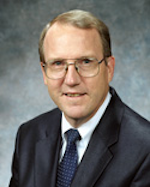Development speed seen among keys to EOR
The oil and gas industry’s ambition for enhanced oil recovery has four watchwords, says the manager of EOR and improved oil recovery for Shell Global Solutions BV: “more, faster, cheaper, greener.”
Focusing on development speed at the EOR & Heavy Oil World conference in Abu Dhabi, Val Brock said the industry’s development time for technology is about that of heavy industry in general—30 years from the conceptual stage to field implementation.
“We’ve got to go faster,” he said, pointing out that the average development time for the US consumer products industry is about 10 years. Brock said the oil and gas industry achieved that speed with expandable tubulars, except for the monobore segment, in which progress has been slower.
He estimated global production potential from the application of EOR at 300 billion bbl of oil.
Crucial to accelerating development of EOR technologies, the Shell Global Solutions executive said, is partnership, such as between international and national oil companies, oil companies and service firms, industry and academia, and public and private entities.
Ali Rashid Al Jarwan, chief executive officer of ADMA-OPCO, an offshore operating company of state-owned Abu Dhabi National Oil Co., also stressed the importance of partnerships, citing joint work to develop large-scale carbon capture and sequestration (CCS) projects between ADNOC and a unit of Masdar, a group of Abu Dhabi enterprises focusing on energy innovation.
The emirate has set a goal of increasing oil recovery to 70% of volumes originally in place.
Jarwan said injection of carbon dioxide probably will dominate EOR in the Middle East, as it does now in the US (OGJ, Aug. 2, 2012, p. 56).
David Robinson, senior research fellow at the Oxford Energy Institute, said CO2 EOR and CCS will have to develop together.
He cited an International Energy Agency forecast that CCS will account for 20% of projected CO2 emission reductions but pointed out that several large projects recently have been cancelled.
Reasons for what he called “a waning of interest in many European countries” and possibly elsewhere include the absence of incentives, decisions by governments to pursue all technologies instead of those closest to being commercial, overestimation of cost reductions available through CCS, lack of government commitment, and problems of CO2 transport.
Robinson recommended a “demand-pull” approach that relies on CO2 for EOR to drive development of CCS—and provides incentives in both applications.
“EOR and CCS are not only complementary, but they need one another,” he said.
Contact Bob Tippee at [email protected].

Bob Tippee | Editor
Bob Tippee has been chief editor of Oil & Gas Journal since January 1999 and a member of the Journal staff since October 1977. Before joining the magazine, he worked as a reporter at the Tulsa World and served for four years as an officer in the US Air Force. A native of St. Louis, he holds a degree in journalism from the University of Tulsa.